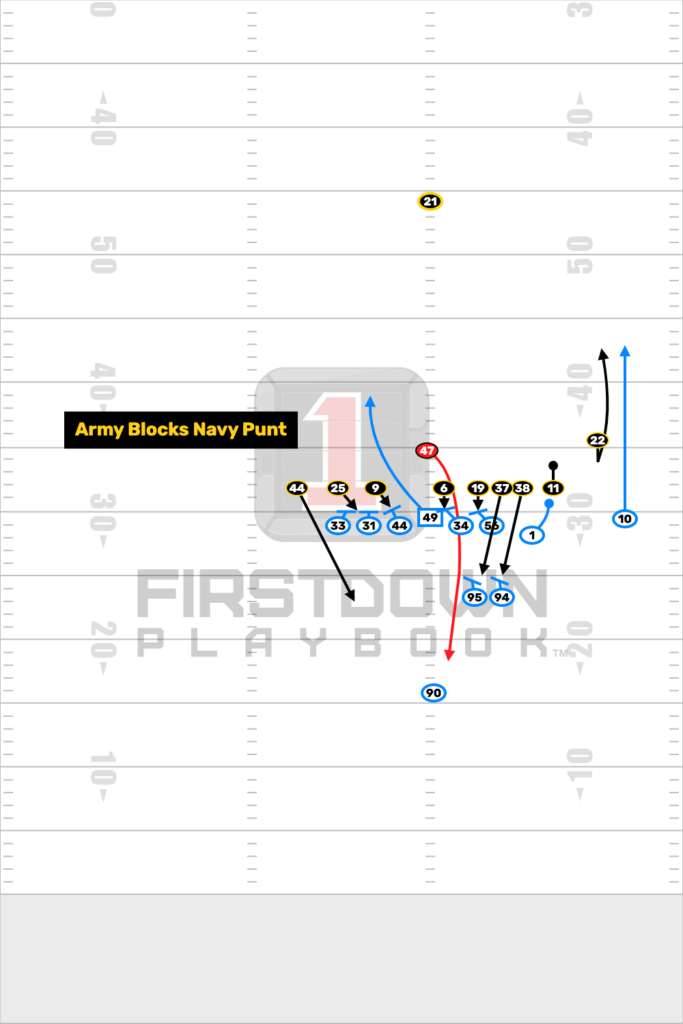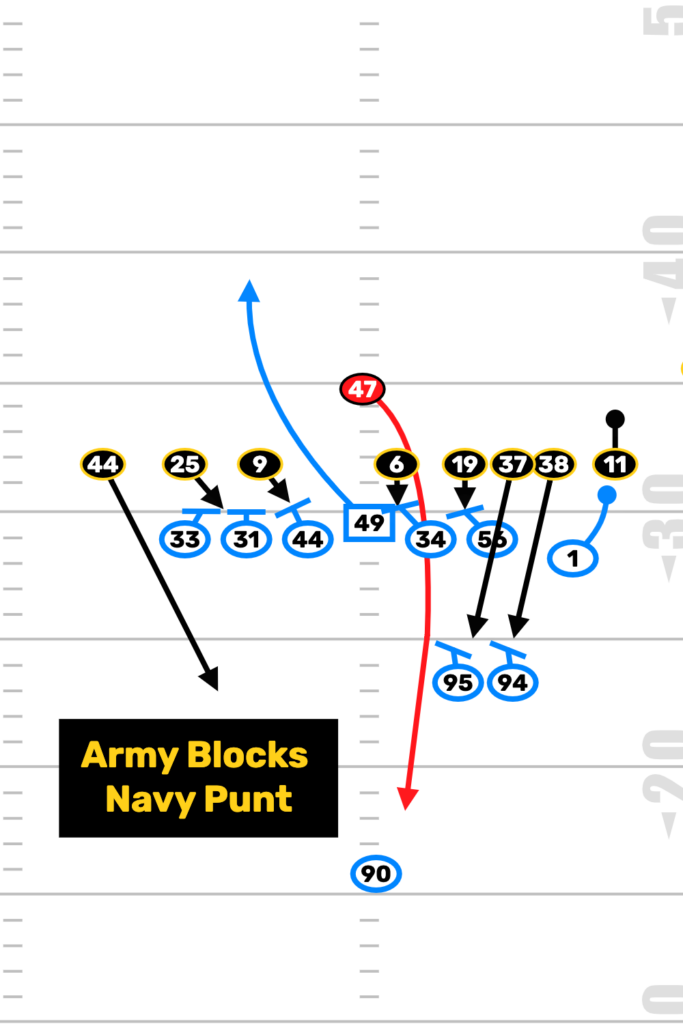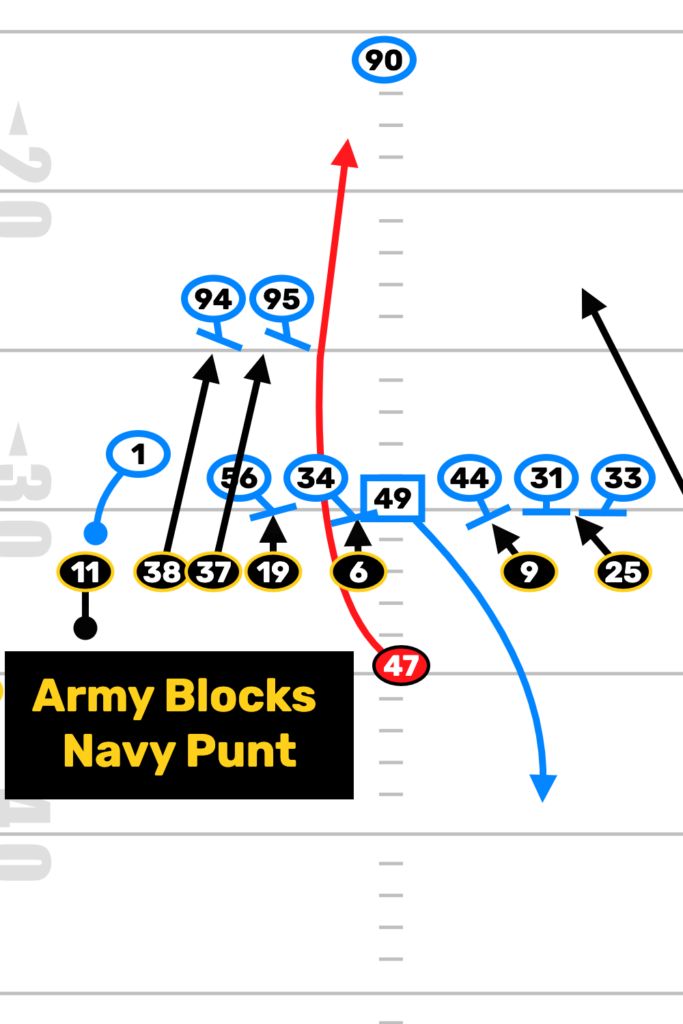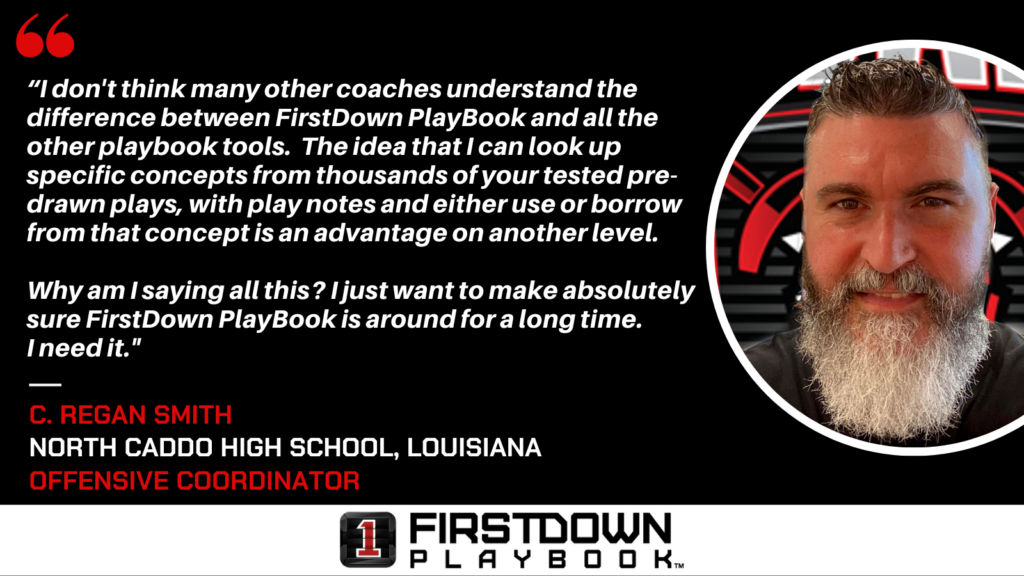Army Punt Block No Accident
As we all know now, this Army punt block kept them hanging around and allowed them to get to overtime and eventually win the game 20-17. Todays All 22 Tuesday will take a closer look at how Army got this done. Trust us, it was not by accident. This Army punt block was well thought out and executed.
This Army Punt Block Was Part Scheme & Part Navy Miscommunication
CLICK ON THE DRAWINGS TO SEE THE VIDEO

The college and high school shield punt schemes have evolved over the past several years. The original concept was to get wide splits and three big players in the backfield to form a shield to the block point. Over the years special teams coaches have now spread these formations out to include only two players in the shield and sometimes even one.
Got A Good Young Kicker?
On this particular punt Navy had two players back in the shield. The nature of shield punt protection is much like it is for a offense playing a defense with a quarterback who can’t run. Your numbers are always going to be bad. Shield punt snappers are rarely included in the protection, so when you look at this protection Navy has 8 to block 9.
As any special teams coach will tell you, this is normal. The key is to know which rushers your eight players need to block. Maybe even more importantly, the punter has to know who these eight players are. It looks like the Navy protection scheme was designed to block the eight most dangerous to the shield side. This is apparent by how they completely and intentionally turned loose #44 from Army off the left edge.
Related: A Simple Punt Return System Vs Shield Punt Teams

More Special Teams: Your Best Coverage Player Needs Your Help
Navy still had a chance to protect this rush if they had communicated to the shield side. In order to be sound, Navy would have had to recount and include #47 in the count. The inside shield player (#95) would have needed to block Army’s #47 in the A gap. Every one else on that side would have needed to block down on a defender. This includes #1 for Navy. Keep in mind, if Navy’s #1 goes in motion #11 has to go with him. Army’s #11 would be hard pressed to rush on the snap.
So what ends up happening is that Navy turns loose an A gap defender on their own 30 yard line. Give a lot of credit to the Army coaches for this. If you watched the game, you would have seen this developing on previous Navy punts. Army ran this perfectly. #47 stayed off of the line of scrimmage just enough to stay out of the Navy count. Yet, he was close enough to get to the block point. #47 also innocently cheated to the field side prior to the snap. These two things kept him out of the Navy protection count.
FirstDown PlayBook Offers Special Teams Clinics Too
Would Army still have had a free runner to the punt? Yes but it would have been the widest defender #11. Keep in mind that #11 for Army had man coverage on #1 for Navy. This, in itself, slows up the punt rush, if that player is brave enough to rush at all.

As a former special teams coach, I can’t tell you how many times I went into games completely sure we were going to block a punt. Many times it was in a situation like this where you thought you had the protection schemed up. Sometimes it worked, but often times, the protection was adjusted and the block was picked up.
On other occasions the players would not disguise the block enough or hide it too long to get home on the block. The point I am making is that this play was very well coached and executed by the players. The result will be a play that will forever live in Army Navy folklore or history. All of this is well deserved.

